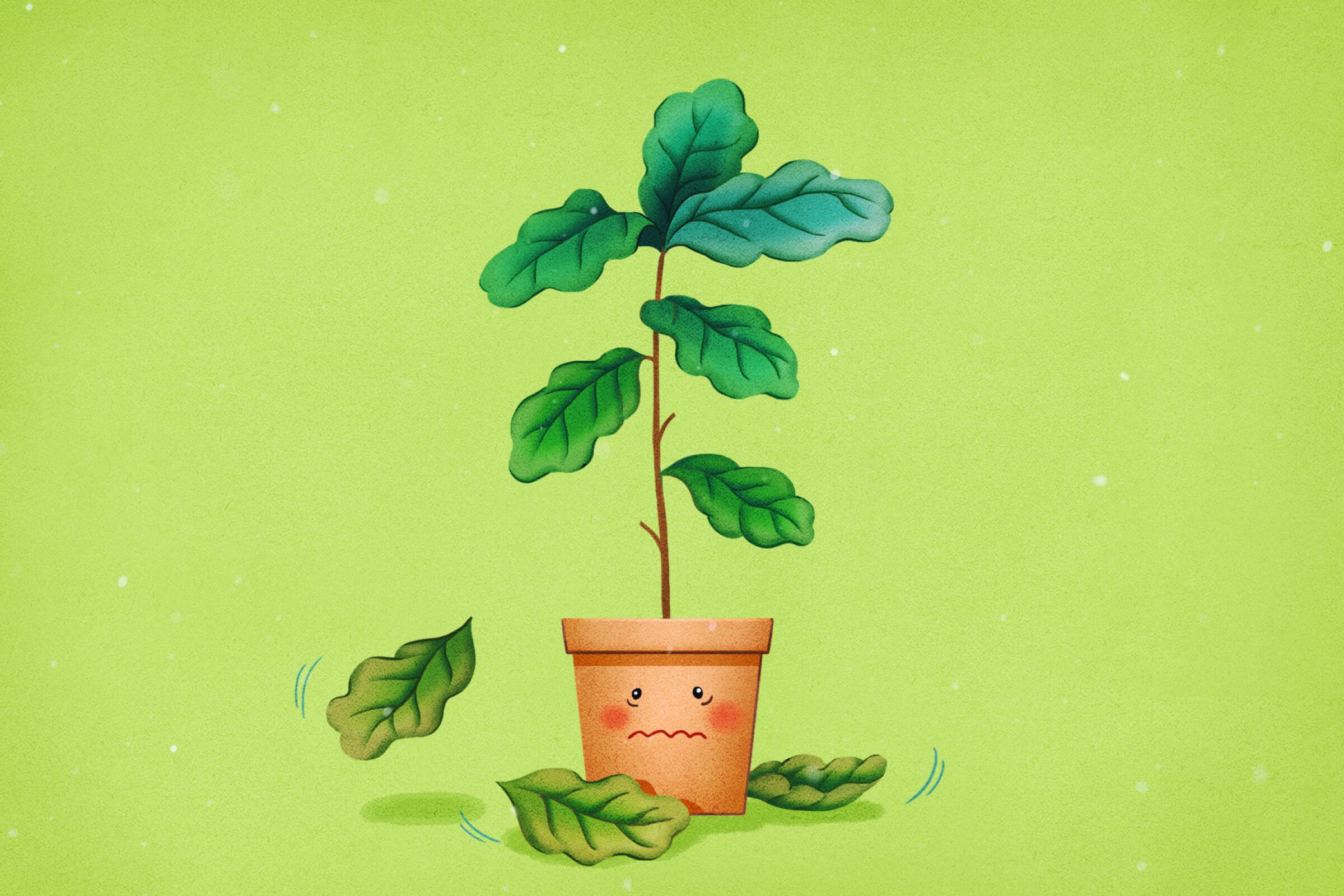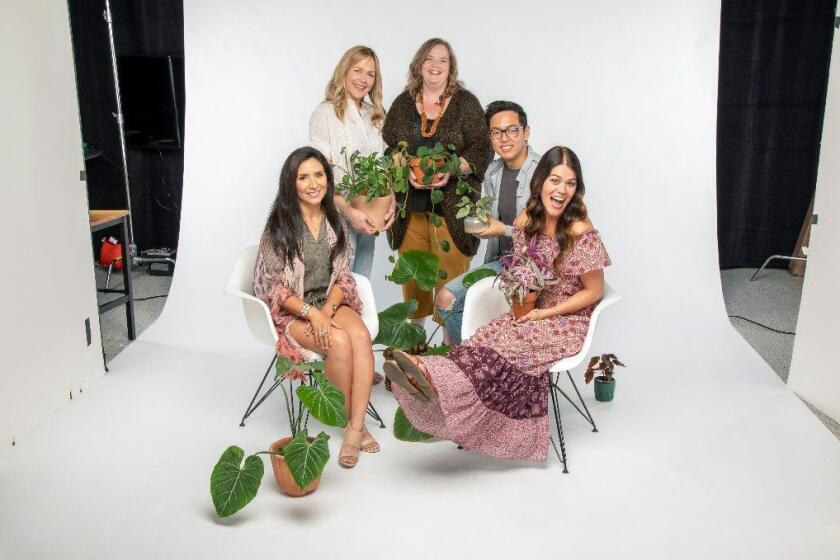You splurged and bought a dramatic fiddle-leaf fig at the nursery. Months later, its beautiful, broad leaves begin to drop. Every leaf that hits the floor is like a dagger to your heart. What’s going on?
Before you panic, know that it’s normal for plants to lose their leaves.
“Plants get new leaves at the top,” explained Los Angeles County master gardener Julie Strnad. “The plant needs to shed its lower leaves so that it can get nutrients to grow new leaves.”
If leaves are dropping and the plant is not going into its dormant period, however, it is probably suffering from improper care — possibly watering mistakes, poor lighting, nitrogen deficiency or shock.
Look at the environment of the struggling fiddle-leaf, for instance. Is it getting too much sun or near an air conditioning or heating vent? A slight move could improve its health dramatically.
Watering problems are another issue but can be tricky to decipher.
That’s because clues about overwatering or underwatering materialize in similar fashion. Leaves that turn yellow and drop might mean you are watering too much … or too little. “It’s frustrating,” said Strnad. “Plants are living things. So nothing is ever straightforward. That’s why it’s great to touch the soil.”
Use your moisture meter — or index finger— to see if the plant needs water. If the soil is dry a knuckle down, water the plant. If it’s moist, leave it alone.
Proper lighting also is important when it comes to your plant’s health.
“If you buy a sun-loving plant and put it in a dimly lighted corner of your house, it’s going to drop leaves and it’s not going to grow,” said Strnad.
Find the correct spot for your plant. As long as you water it, and give it the correct amount of light, it will take care of itself. For a comprehensive list of light and water guidelines for foliage and flowering plants, consult the University of California’s Master Gardener handbook at ucanr.edu
Insufficient nutrients also can lead to leaf drop. Garden expert Annette Gutierrez of Potted recommends sea kelp as a regular houseplant supplement. “I like it because you can’t burn your plant,” she said. “You need to feed the soil, not the plant, just like crops, because that’s what is being depleted. Usually when you get a plant from the nursery, it’s fine. But in a year, you will need to start supplementing. I dilute [sea kelp] in water and feed my plants. I even soak my air plants in it.”








